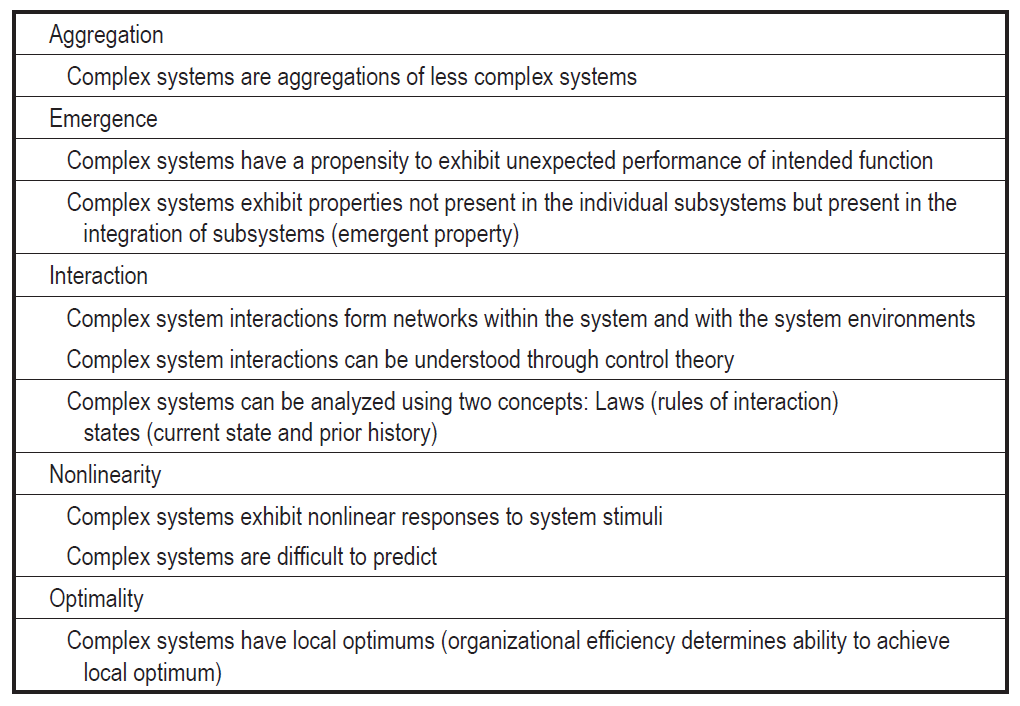Good evening.
1.
At the end of last week’s update I touched on legibility, the human inclination to simplify complex systems so as to impose control over them. Treated extensively in the 1990s by political scientist and anthropologist James C. Scott of Yale University in his book Seeing Like a State, legibility is an intellectual cousin to high modernism, which exudes unwavering confidence in the potential of science and technology to master nature, including human nature, to meet human needs.
The Bauhaus movement is perhaps legibility’s most beloved transatlantic celebrity. On the hilly banks of the Roaring Fork River, where I’ve been bolted down for much of the pandemic, the vision of Austrian émigré and Bauhaus instructor Herbert Bayer has left its imprint all over the valley. Inside the ruminative Aspen Institute, expert curators staff a dedicated gallery.
But elsewhere too has modernism exerted its hold. When an elite group of European planners met in Athens in 1933 to proclaim a new vision for cities, they called themselves modernists. The Athens Charter, as the vision came to be known, cherished legibility and advocated freestanding, monofunctional buildings laid out neatly on a grid but surrounded by vaguely-defined no man’s land, and it has proliferated on a global scale since.
In 2019, architect and leading researcher at the Royal Danish Academy of Fine Arts Jan Gehl refuted in a new book foreword:
All in all, these new [modernist] principles represented the most radical course change in the history of human settlement. And, by and large, there was never a proper assessment of whether these changes actually worked for mankind. They, in fact, did not…as exemplified by the widespread discontent...
2.
In 2010, the United States National Aeronautics and Space Administration (NASA) and the University of Alabama in Huntsville (UAH) co-founded a consortium to investigate systems engineering and to advance its discipline. It turns out one of the pre-dominant issues confronting large-scale systems engineering is that of system complexity. In the consortium’s seminal publication Engineering Elegant Systems: Theory of Systems Engineering, the co-authors explain:
System complexity is defined as a measure of a system’s intricacy and comprehensibleness in interactions within itself and with its environment. This definition points to two factors in complexity: (1) Physical/logical intricacy and (2) human cognitive comprehension.
Note that last bit on the human element. We’ll come back to it a few more times in this update.
The consortium goes on to provide a granular table of properties of a complex system:
What’s remarkable is that of the five properties, two, emergence and nonlinearity, aren’t even internal to the system but stem from the limitations of the human mind.
In social sciences too have these properties amply manifested. Nineteenth-century French economist, journalist, and member of L'Assemblée nationale Frédéric Bastiat wrote in his 1850 pamphlet That Which is Seen, and That Which is Not Seen:
In the sphere of economy, an act, a habit, an institution, a law, gives birth not only to an effect, but to a series of effects. Of these effects, the first only is immediate; it manifests itself simultaneously with its cause — it is seen. The others unfold in succession — they are not seen: it is well for us, if they are foreseen.
Between a good and a bad economist this constitutes the whole difference — the one takes account of the visible effect; the other takes account both of the effects which are seen, and also of those which it is necessary to foresee.
Across the English Channel in 1691, John Locke successfully argued that the government ought not to cap interest rates, because lenders would find ways to evade the law and pass the cost of evasion to “widows, orphans and all those who have their estates in money”. Those the government intended to protect would perversely end up with higher liability. The reasoning has withstood the test of time, as central bankers and economists even today acknowledge and try to mitigate the same concern in major interest rate and price control policies.
3.
At the moment, space is again in the headlines. Thanks to a handful of space cadet billionaires but also the current pandemic alerting us to the monstrously tragic consequences of tail risk, expansion of human presence into space has taken on greater moral meaning and urgency.
This space expansionist view rests not only on a wealth of science fiction by generations of influential writers such as Jules Verne and H.G. Wells, but also substantial work produced by serious scientists, engineers, military planners, and an informed, diverse, global space intelligentsia. Indeed the name of this newsletter, the Ion Drive, takes inspiration from the eponymous electric propulsion system for spacefaring.
In ISSUE 3: The Case for Space, I borrow the words of Mark Hopkins, an economist and board member of the National Space Society:
The vast majority of resources in the solar system lies in space rather than on the Earth. This is true of both materials and energy… The sun produces ten trillion times more energy than what is currently used by the human race. If we could bring just a small percentage of that to Earth, we will have all the energy we need, and it’s a clean, inexhaustible resource. There is vast potential for increasing the size of the human economy by tapping into these resources... Space makes possible a prosperous and hopeful future for all of humanity.
But in examining the folly of legibility in forestry last week, I couldn’t help asking whether full-throated space expansionism has also fallen prey to a failure to appreciate complexity. After all, despite widely different rationales and even heated disagreement among space advocates, all take for granted expansion to space is a Good Thing. Where is the debate on the unintended consequences? On Bastiat’s that which is not seen?
It helps here to pinpoint an essential physical property of space little discussed in popular media. Although at first the void between stars and planets may seem like a wide open commons in which spacecraft can sail in any direction, the existence of gravitational wells makes specific lanes of travel more fuel-economical. Meanwhile, radiation belts and other natural phenomena lethal to machines and human life render certain zones highly undesirable. For example, the Earth’s massive gravity well means it takes more energy to travel from the Earth to the Moon than from the Moon to Mars. Linear distance matters less than fuel economy, and the void of space consists of unseen celestial, energetic mountains, valleys, deserts, and seas.
Associate Professor Everett Dolman of the School of Advanced Airpower Studies at Maxwell Air Force Base, Alabama illustrates in his 2002 book Astropolitik, Classical Geopolitics in the Space Age:
Perhaps the most intriguing point locations useful for strategic or commercial bases in Earth-Moon space are the gravitational anomalies known as Lagrange Libration Points, named for the eighteenth-century French mathematician… Lagrange calculated that there were five specific points in space where the gravitational effects of the Earth and Moon would cancel each other out… An object fixed at one of these points (or more accurately stated, in tight orbit around one of these points) would remain permanently stable, with no expenditure of fuel… The occupation and control of these points is of such vital importance that an advocacy group called the L-5 Society was formed to influence national policymakers.
Dolman compares these advantageous points in space topology to choke points in conventional military planning. Their importance is that they dictate specific tactics and rationale for not only efficient exploitation but optimal control of space.
So the uncomfortable truth, perhaps why it’s hardly spoken of by non-military space advocates, is that, much like conflicts on Earth, when we go to space we bring our problems with us, except with the practically infinite resource of the Solar System we can wreak destruction infinitely more terrible on each other.
But even assuming we somehow overcome our Cainitic tendencies, the techno-geographic comparison of space to an open frontier seems inaccurate at best. Daniel Deudney, professor of political science and international relations at Johns Hopkins University elaborates in his 2020 book Dark Skies, Space Expansionism, Planetary Geopolitics, and the Ends of Humanity:
The technologies of access to space may improve in the future, but until they do very significantly, the sky literally is the limit for nearly all human activities… The existence of a formidable barrier-boundary between the terrestrial Earth and the astrosphere also means that all the growth of human numbers and interactions is occurring within an effectively closed space…
Thinking accurately about the geography of the planet strongly confounds the claim that expansion into space has reduced the closure produced by the expansion of machine civilization within the finite confines of the terrestrial Earth. Space activities are bringing parts of the Earth into much closer interaction than reducing their interaction through spatial interaction… [W]e should expect that a significant opening of the astrosphere as a full frontier will quickly produce an extreme density of interaction, interdependence, and degradation.
In other words, Deudney cautions us that there is great discontinuity going from a vibrant human presence on Earth to a vibrant human presence in space, and such discontinuity could be fatal. I rather like Deudney’s visualization, reproduced below with slight edits. Arrows represent movement of people.
Professor Deudney’s entire book is like an oversized gem, almost overwhelming in contrarian insight and every chapter a worthwhile endeavor to examine up-close. As a real science-based and realpolitik book, Dark Skies steps up toe-to-toe in intellectual heft with an equally haunting work of science fiction, the Hugo Award-winning Three Body Problem trilogy by Liu Cixin. Both warn against space exploration, though the authors advocate diametrically opposed political systems in their works.
I am skeptical of the feasibility of Deudney’s recommendation to reverse, regulate, and relinquish broad groupings of current and aspirational space programs. Among Deudney’s wish list are large earth orbital infrastructures, colonization of Mars and asteroids, national or private enterprise asteroid orbit alteration, and ballistic missiles and orbital weapons. For although Deudney provides well-reasoned rationale, he leaves out prescription on how key policymakers and public support might be rallied domestically or treaty discussions coordinated internationally. That said, readers should hardly place the burden on Deudney, or any one person for that matter. This is literally the problem of solving for planetary, perhaps even Solar Systemic, peace.
In the end, I also believe that the human longing to explore new worlds will simply be too great to tame for long. Better we accept it as fact and solve for its dangers than hope for space-abstinent future generations.
4.
Let us return then to the NASA-UAH consortium, which definitionally includes the limits of human cognition in describing system complexity. Humans learn as we are presented with new information. Recent research, such as studies mentioned in a 2016 Scientific American article, postulates that the human brain may operate in a probabilistic mode, accepting only tentatively what it believes to be true, and updating such belief as new information emerges. For example, we see a bike across the street and decide it’s pink but remain open-minded that it’s really red because of the angle of the sunlight.
This very human cognitive computation is encapsulated in a mathematical equation: Bayes’ Theorem. The theorem’s simplest form states that the probability of A being true given B equals the probability of B being true given A multiplied by the unconditional probability of A and divided by the unconditional probability of B.
If this is a mouthful and the bicycle example above hasn’t shed enough light, consider the following post by science humor Twitter account IFLScience:

Stories fill another book of how the Reverend Thomas Bayes discovered the theorem in 1740 and why it suffered nearly two centuries of scorn before acceptance by mainstream science, but at the core of Bayes’ Theorem was acknowledgement that the search for truth must not be all objectivity and precision — that modern science must not be wholly legible. Today, the theorem has been credited, among countless examples, with cracking the Enigma Code, powering search engines and speech recognition, rate-setting at central banks, and creating a new field in high-energy astrophysics such as the discovery of the Higgs-Boson particle.
So where do we go from here? I am no scientist nor astro-geopolitical strategist. Any discussion on the subject immediately strains the intellectual credibility of this newsletter. As an analyst of economics and design, I find the only call to action I can credibly extend is that my fellow commentators adopt a Bayesian framework in our discourse of space exploration. Rather than unqualified endorsement of a public program or private venture just because it relates to space, ask what our Bayesian priors would be, and how the new initiative might affect the posterior probability distribution of our knowledge.
In the introduction to her book on Bayes, author Sharon Bertsch McGrayne summarizes:
[Bayes’s rule] is a logic for reasoning about the broad spectrum of life that lies in the gray areas between absolute truth and total uncertainty… Bayes has provided a way of thinking rationally about the world around us…[a]nd it says that we can learn even from missing and inadequate data, from approximations, and from ignorance.
Perhaps given a choice between passion and passionate reason, the latter poses the greater danger, and a Bayesian approach to space exploration is vital if we were to avoid wrecking our already outworn home.
If you’ve enjoyed this update, please consider forwarding to a friend or subscribing below. Thank you for your support.
From Aspen, Colorado
Victor















Share this post